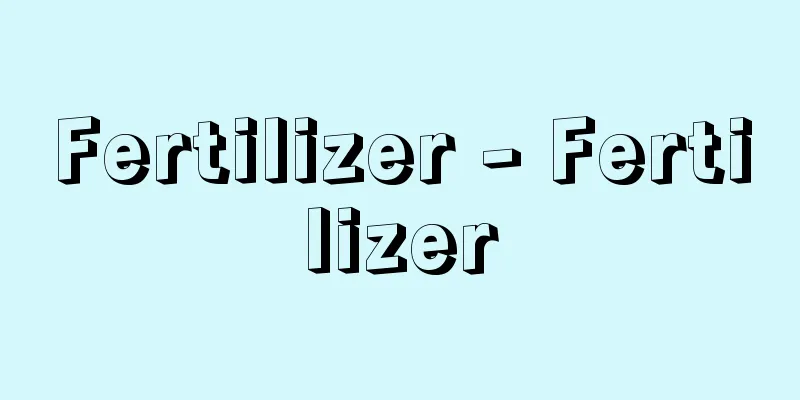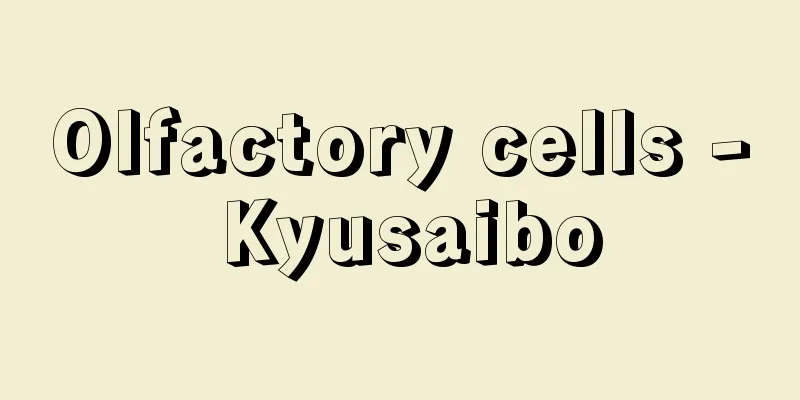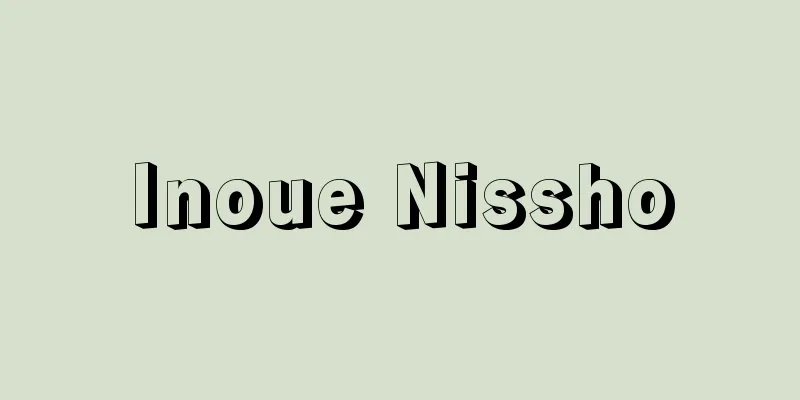Fertilizer - Fertilizer

|
Nowadays, a wide variety of things are used as fertilizers by farmers, so it is difficult to give a simple definition of fertilizer. In Japan's Fertilizer Control Law (Law No. 127 of 1950), fertilizers are defined as "substances applied to land for the purpose of providing nutrients to plants or bringing about chemical changes in the soil to contribute to plant cultivation, and substances applied to plants for the purpose of providing nutrients to plants." Therefore, not only nutrients applied to soil, but also foliar sprays applied directly to plants and culture solutions used in hydroponics and gravel cultivation are considered fertilizers. In addition, substances that do not contain any of the general fertilizer components such as nitrogen or phosphorus but improve the chemical properties of the soil and promote plant growth, such as lime materials, are also treated as fertilizers. However, substances other than fertilizers that have an effect when applied to soil (improving the physical and biological properties of the soil) are called soil improvement materials. As of 2012, there are 12 types of designated soil improvement materials, including VA mycorrhizal fungi materials, which were added in March 1997. Since the accident at the Fukushima Daiichi Nuclear Power Plant, which was caused by the Great East Japan Earthquake in March 2011, the provisional tolerance for radioactive cesium in fertilizers and soil improvement materials has been set at 400 becquerels per kilogram. [Yuki Koyama] historyIn every country in the world, as agriculture became established and developed gradually, the amount of land owned by each farming household became smaller, and continuous and multiple cropping became common, fertilizers were empirically developed with the idea of restoring soil fertility and replacing what had been taken from the land. It is unclear when fertilizers first began to be used in Japan, but there are records of their use as early as the Heian period. Historical documents show that fertilizers used during this period were stable manure, grasses from the mountains and fields, and wood ash, and the Engishiki records the use of stable manure in the section on cultivation in the garden of the Naizenshi. It is believed that full-scale use of fertilizers began during the Kamakura and Muromachi periods. The fertilizers used at that time were so-called self-sufficient fertilizers, such as grasses from the mountains and fields (kusagoe), stable manure, and wood ash. However, there are no clear records of human excrement, so it is unclear when it began to be used, but judging from the use of manure buckets, it is certain that it was already being used as fertilizer during the Kamakura period. Incidentally, the word "fertilizer" was created after the Meiji Restoration; prior to that, the word "fertilizer" was used, which was a noun derived from the word "koyasu" (to fertilize the soil). Meanwhile, in Western Europe, agriculture involving the raising of livestock developed, and animal waste has long been used as fertilizer. The English words manure and dung, which refer to fertilizer, both mean livestock waste. In addition to these organic fertilizers, inorganic saltpeter was discovered to be useful as a fertilizer in the 16th century, and Chilean saltpeter had already become widely used as a fertilizer by the middle of the 18th century. The famous "inorganic nutrient theory" of the German scientist Liebig was published in 1840, and around this time superphosphate, a typical chemical fertilizer made by chemically treating water-insoluble phosphate rock with sulfuric acid to convert it into water-soluble phosphorus that is easily absorbed by plants, was developed and began to be used. Already at that time, potash from potash (potassium) deposits, lime from limestone, and phosphorus from bone meal were being used as fertilizers. However, livestock waste was still the main source of nitrogen fertilizer. However, in the 19th century, Germany succeeded in producing synthetic ammonium sulfate, and large-scale synthetic ammonia plants were built that fixed nitrogen from the air, producing and exporting large quantities of ammonium sulfate. This marked the beginning of today's heyday of chemical fertilizers. [Yuki Koyama] Fertilizer consumptionThe amount of fertilizer applied per unit area in Japan is already quite high compared to the rest of the world, and most of it is chemical fertilizer. We cannot expect much of an increase in fertilizer consumption in Japan in the future. On the contrary, since the 1980s, there have been problems such as a decline in soil fertility due to the continuous use of chemical fertilizers, groundwater pollution due to nitrate nitrogen, and environmental deterioration due to the eutrophication of rivers and lakes caused by nitrogen and phosphorus runoff from fertilizer. In addition, there are concerns about the long-term depletion of phosphorus resources, so the tendency toward high fertilizer and high yields that has existed up until now is showing signs of being reversed in the future. [Yuki Koyama] The three elements of fertilizerThere are 16 types of nutrients essential for plant growth, but the nutrients actually applied to farmland as fertilizers are limited to elements such as nitrogen, phosphorus, potassium, calcium, magnesium, manganese, and boron. Of these, nitrogen, phosphorus, and potassium are easily lacking in soil, and because their application has a significant effect, they are specifically called the three elements of fertilizer. Sometimes, calcium is added to these and they are called the four elements. Other elements, magnesium, manganese, boron, and silicon, are treated as main components under the Fertilizer Control Law. However, although trace elements such as copper, iron, zinc, and molybdenum are permitted to be mixed into fertilizers, they are not treated as main components. In addition, plants can grow without silicon, but silicophilic plants such as rice contain a large amount of silicon, and when applied, they grow healthier and increase yields, so they are called useful elements and recognized as the main components of fertilizers. [Yuki Koyama] Types of fertilizers and their main propertiesNitrogen fertilizerFertilizers whose main component is nitrogen are classified into ammonia, nitrate, urea, cyanamide, ureide, urea, guanidine, etc. depending on the form of nitrogen. (1) Ammonia nitrogen fertilizers include ammonium sulfate ( NH4 ) 2SO4 , ammonium chloride ( NH4Cl ), and ammonium phosphate ( NH4 ) 2HPO4 . This form of nitrogen dissolves well in water and is absorbed directly by crops , so it is fast acting. It is also well absorbed by soil and is not easily washed away by rainwater. It is suitable for use as a base fertilizer or as a top dressing. However, it is a physiological acidic fertilizer, and has the disadvantage of making the soil acidic. Also, it should not be mixed with alkaline fertilizers such as lime or wood ash, as the main component ammonia will be lost. In the United States, ammonia has been put to practical use as a direct fertilizer. It is used in two forms: liquefied ammonia (82% N) liquefied under high pressure, and ammonia water (ammonia water) with 15-28% N. It is considered a promising nitrogen fertilizer because it does not contain any secondary components and does not deteriorate the soil. (2) Nitrate nitrogen fertilizers include ammonium nitrate (NH 4 NO 3 ) , Chilean saltpeter (sodium nitrate) NaNO 3 , and calcium nitrate (calcium nitrate) Ca(NO 3 ) 2. This form of nitrogen is fast-acting because it dissolves well in water and is well absorbed and used by crops. However, it is hardly adsorbed by the soil and is easily washed away by rainwater, and applying too much can easily cause concentration problems. This is the ideal nitrogen fertilizer to apply as a top dressing for field crops, but in paddy fields it is not recommended to use it because not only does it run off, but it is reduced and denitrified, becoming nitrogen gas and being lost into the atmosphere. (3) Urea nitrogen fertilizer There is urea ( NH2 ) 2CO . It is a molecular form that dissolves well in water, and can be absorbed and used directly by crops through their roots, but most of it is converted to ammonia or nitrate in the soil before being absorbed and used by crops. It takes 4-5 days in summer to turn into ammonia in the soil, and about 1-2 weeks in winter. Urea is a chemically and physiologically neutral fertilizer, and does not deteriorate the soil. It is also well absorbed and used directly by crops when sprayed on the leaves, so it is sprayed on the leaves of vegetables and fruit trees. However, it has a high nitrogen concentration and can easily cause concentration problems, so care must be taken not to overdo it. (4) Cyanamide fertilizers There is lime nitrogen , CaCN2 . This nitrogen dissolves in water but is toxic to crops. This toxicity is used to its advantage to eradicate earthworms and other insects in the soil and to control soil nematodes. It is an alkaline fertilizer that, when applied to the soil, is first converted into urea by the action of soil colloids in the soil, and then converted into ammonia carbonate by the action of enzymes in soil microorganisms. This ammonia is absorbed and used by crops. Therefore, its effectiveness as a fertilizer is somewhat slow. If it comes into direct contact with leaves, they will die, so care must be taken when using it. (5) Ureide fertilizers, urea fertilizers include isobutylidene diurea (IB) and ureaform. These are condensation products of urea and aldehydes, which are poorly soluble in water and are slow-release nitrogen fertilizers that work slowly on crops. (6) Guanidine fertilizers There is guanylurea. It is a type of modified lime nitrogen and has a slow release effect. It is mainly used in paddy fields. [Yuki Koyama] Phosphate fertilizerFertilizers that contain phosphoric acid as their main component are generally classified into (1) water-soluble, (2) soluble and chelate-soluble, and (3) insoluble, depending on the solubility of the main component, phosphoric acid, in various solvents. Soluble refers to phosphoric acid that dissolves in alkaline Peterman's ammonia citrate solution, and chelate-soluble refers to phosphoric acid that dissolves in 2% citric acid solution. (1) Water-soluble phosphate fertilizers include superphosphate, triple superphosphate, ammonium phosphate, and liquid phosphate fertilizer. Superphosphate Ca(H2PO4)2.H2O + 2CaSO4.2H2O is the oldest and most widely used phosphate fertilizer. Most of the phosphorus contained is water-soluble and is well absorbed and used by plants. However, because it is water-soluble, it tends to bind with iron and aluminum in the soil and become unavailable, so it is less effective in acidic soils. Triple superphosphate has a higher phosphorus content because it does not contain gypsum, but its fertilizing effect and handling can be considered the same as superphosphate. Ammonium phosphate is water-soluble and has high fertilizing effect, but its drawback is that it is highly hygroscopic. The product is granulated, but special care must be taken when handling it to prevent it from absorbing moisture. (2) Soluble phosphate fertilizers and soluble phosphate fertilizers These include soluble phosphate fertilizer and calcined phosphate fertilizer. Although they are not absorbed by crops as quickly as water-soluble phosphate fertilizers, they are not fixed as quickly by the soil and also contain secondary components such as silica and magnesia. Furthermore, because they are alkaline, they are used in large quantities as a soil conditioner for volcanic ash soils. Fused phosphate fertilizer is the general term for phosphate fertilizers produced by the melting method, but in Japan it usually refers to soluble magnesia phosphate fertilizer. Along with superphosphate, it is one of the two most important phosphate fertilizers. (3) Insoluble phosphate fertilizers: These are not used in Japan, but in some countries, phosphate rock is powdered and used. They decompose gradually in the soil over a long period of time and have some fertilizing effect. [Yuki Koyama] Potassium fertilizerThis refers to fertilizers whose main component is potassium (potassium), and typical examples include potassium sulfate (K 2 SO 4 ) and potassium chloride (KCl). Both are water-soluble and are well absorbed and used by crops. They are mainly used as base fertilizer, but can also be used as top dressing. Wood ash is useful as a potassium fertilizer for home use. All of these potassium fertilizers are fast-acting, but nowadays, poorly soluble slow-release potassium fertilizers such as potassium silicate fertilizer have been developed and are commercially available. [Yuki Koyama] Limestone fertilizerThere are quicklime (calcium oxide) CaO, calcium carbonate CaCO 3 , slaked lime (calcium hydroxide) Ca(OH) 2 , and dolomite. They are mainly used to correct the acidity of the soil, and the amount applied is much larger than that of regular fertilizers. When applying, it is best to mix the fertilizer as evenly and well as possible with the soil. [Yuki Koyama] Magnesium fertilizerMagnesium sulfate, magnesium carbonate, and magnesium humate are used. They are applied to acidic soils where crops are prone to magnesium deficiency. Dolomite lime and soluble phosphate fertilizer also contain magnesium, so they are effective in preventing magnesium deficiency. [Yuki Koyama] Silica fertilizerSlag such as calcium silicate contains silicic acid that dissolves in dilute acid, and is particularly effective for rice and other grasses. In the case of field crops, it is sometimes used in large quantities as a soil conditioner because it has the effect of reducing the aluminum content of the soil. [Yuki Koyama] Micronutrient fertilizerCurrently, only two trace elements (also called micronutrients) are approved: manganese and boron. Other trace elements such as iron, copper, zinc, and molybdenum are permitted as foliar sprays. There are three types of manganese fertilizers: manganese sulfate fertilizer, magnesium sulfate fertilizer, and manganese slag fertilizer. There are two types of boron fertilizers: borate fertilizer and boric acid fertilizer. [Yuki Koyama] Compound fertilizerFertilizers that contain two or more types of crop nutrients are classified into compound fertilizers, which are a mixture of single fertilizers, and chemical fertilizers that undergo chemical reactions during the manufacturing process. The consumption of this type of fertilizer has increased dramatically in recent years, and many of the fertilizers in general use are compound fertilizers. One of the reasons for the increase in consumption is that it requires less effort than single fertilizers that only contain one nutrient. Various manufacturers produce and sell compound fertilizers with different characteristics. There are also compound fertilizers that contain trace elements, and among them, soluble compound fertilizers with trace elements are usually called FTE, and are guaranteed to contain 5% or more boron and 10% or more manganese. They also contain silica, iron, copper, zinc, molybdenum, and other secondary ingredients, making them effective for comprehensive supplementation of trace elements. [Yuki Koyama] Organic fertilizerOrganic fertilizers are natural organic matter that contain fertilizer components that are effective for crops. The Fertilizer Control Law stipulates that organic fertilizers are limited to those of animal or vegetable origin. Of these, those made from the same raw materials and with relatively stable fertilizer component content and quality are set official standards and treated as ordinary fertilizers. There are 42 types, including fish meal such as fish meal powder, oil cakes such as rapeseed oil meal, castor oil meal, and rice bran oil cake, and animal waste such as raw bone meal and steamed bone meal. On the other hand, those with inconsistent component content and quality are treated as special fertilizers, distinct from ordinary fertilizers. These include livestock poultry manure, compost, sludge fertilizer, and human waste. Organic fertilizers generally have lower ingredient content than chemical fertilizers, and when applied to the soil, they require several days to decompose. In addition, the decomposition rate of the ingredients is well suited to the growth of potted plants such as vegetables and flowers, so they are popular for horticultural crops. This is due to the fact that the fertilizer effect can be adjusted, which is difficult to replace with chemical fertilizers, and that even if excessive fertilizer is applied, it is unlikely to cause concentration problems. In addition, it has long been known that using organic fertilizers has an effect on products, such as improving the taste, coloring, and shelf life of fruits and vegetables. This is thought to be because organic fertilizers provide a smooth supply of nutrients such as nitrogen and phosphorus that meet the needs of crops, thereby improving their quality, but no official tests or research have yet to provide an answer. Today, organic agricultural products are attracting attention in terms of quality and safety. Farmers who practice organic farming use so-called "bokashi fertilizers," which are made by mixing oil cake, bone meal, fish meal, rice bran, mountain soil, rice husks, etc., adding an appropriate amount of moisture, and allowing it to ferment sufficiently. Bokashi fertilizer generally has a fairly low nitrogen content of around 1-2%, and as a result of being applied in large quantities over a long period of time, organic matter accumulates in the soil of organic farming, which is expected to improve the soil environment by developing a granular structure and enriching the biota. In addition, due to the accident at the Fukushima Daiichi Nuclear Power Plant in 2011 (Heisei 23), radioactive materials were released, and the handling of sludge containing radioactive materials used as fertilizer was restricted to 200 becquerels per kilogram or less. [Yuki Koyama] Special fertilizerA distinctive type of fertilizer is a coated fertilizer with controlled release that uses a physical coating to prevent leaching. Polyolefin resins and alkyd resins are used as coating materials. This increases the absorption and utilization of fertilizer components by crops, so there is less loss to the environment and it has an environmental conservation effect. Also, fertilizers containing pesticides have been developed to reduce the labor required for application. Furthermore, in response to the development of side dressing for rice paddies, improvements are being made to paste fertilizers and chemical fertilizers that are highly adaptable to mechanical application. [Yuki Koyama] How to apply fertilizer (amount)Fertilizer application methods vary depending on uncertain factors such as the type of crop being grown, the time and frequency of application, differences in region and soil, the type of fertilizer used, the weather of the year, and agricultural product prices. As such, it is not possible to state a unified standard, so please refer to other specialist books for details. The amount of fertilizer applied also varies greatly depending on the type of crop. This is because the types and amounts of nutrients absorbed and utilized vary greatly depending on the type of crop, the yield, and the soil in which it is grown. [Yuki Koyama] "Newly Selected Practical Handbook of Fertilizers" by Shioya Masakuni (1962, Yokendou)" ▽ "Encyclopedia of Plant Nutrition, Soil and Fertilizers" edited by Takai Yasuo, Hayase Tatsuro and Kumazawa Kikuo (1976, Yokendou)" ▽ "All About Fertilization" edited by Tanaka Akira, Idei Yoshimitsu and Nakayama Toshihiko (1977, Hokkaido Cooperative Press)" ▽ "An Introduction to Fertilizer Science" by Okuda Azuma, revised and expanded edition (1987, Yokendou)" ▽ "Handbook of Organic Fertilizers and Microbial Materials" edited by Date Noboru (1988, Rural Culture Association)" ▽ "The Path of Fertilizers and the Path Back - Considering Environmental and Human Issues" by Takahashi Eiichi (1991, Kenseisha)" ▽ "Plant Nutrition and Fertilizer Science" by Yamazaki Kou, Sugiyama Tatsuo, Takahashi Eiichi, Kayano Mitsuo, Tadano Toshiaki, and Aso Shohei (1993, Asakura Publishing)" ▽ "Fertilizer Handbook, 5th edition, edited by Date Noboru and Shiozaki Hisao (1997, Rural Culture Association)" ▽ "Soil and Fertilizer Dictionary, new edition, edited by Fujiwara Shunrokuro, Anzai Tetsuro, Ogawa Yoshio, and Kato Tetsuro (1998, Rural Culture Association)" ▽ "Soil, Fertilizer, and Plant Nutrition Glossary, edited by the Japanese Society of Soil Science and Plant Nutrition (2000, Yokendou)" ▽ "Soil and Fertilizer" by Yamane Ichiro and Okazaki Masanori (2001, National Agricultural Improvement and Extension Association)" ▽ "Fertilizer Dictionary, revised 5th edition, edited by the Fertilizer Dictionary Editorial Committee (2001, Fertilizer Association)" ▽ "Encyclopedia of Plant Nutrition and Fertilizer, Editorial Committee for the Encyclopedia of Plant Nutrition and Fertilizer (2002, Asakura Publishing)" ▽ "Fertilizer Yearbook, various years' editions, edited by the Fertilizer Association Newspaper Department (Fertilizer Association)" ▽ "Pocket Fertilizer Handbook, various years' editions, supervised by the Production Materials Division of the Ministry of Agriculture, Forestry and Fisheries Production Bureau (Agriculture and Forestry Statistics Association)" [Reference items] | | | | | | | | | | | | |©Shogakukan "> Fertilizer classification based on application method ©Shogakukan "> Standard amount of fertilizer to be applied Source: Shogakukan Encyclopedia Nipponica About Encyclopedia Nipponica Information | Legend |
|
今日では実に多種多様のものが肥料として農家で使用されているので、肥料を簡単に定義づけることは困難となっている。日本の肥料取締法(昭和25年法律第127号)でいう肥料とは「植物の栄養に供すること又は植物の栽培に資するため土じように化学的変化をもたらすことを目的として土地にほどこされる物及び植物の栄養に供することを目的として植物にほどこされる物」と定義づけされている。したがって、土壌に施用する養分元素ばかりではなく、直接植物に施す葉面散布剤や水耕・礫耕(れきこう)に使う培養液も肥料であり、また窒素、リンなどの一般的な肥料成分はまったく含まれていないが、土壌の化学的性質を改善して植物の生育を良好にする物質、すなわち石灰資材なども肥料として取り扱われる。ただし、肥料以外で土壌に施用して効果(土壌の物理性、生物性の改善)があるものは土壌改良資材という。指定を受けている土壌改良資材は1997年(平成9)3月から追加指定されたVA菌根菌資材を含め、2012年(平成24)時点で12種類ある。なお、2011年3月の東日本大震災に伴い発生した東京電力福島第一原子力発電所事故以降は肥料・土壌改良資材の放射性セシウムの暫定許容値として1キログラム当り400ベクレルが設けられている。 [小山雄生] 歴史肥料は世界のどこの国においても、農業が土地に定着してしだいに発展し、農家一戸当りが所有する土地面積が狭くなり、連作や多毛作が行われるようになってから、地力の回復ならびに土地から奪い去ったものを元に戻すという考え方から経験的に開発されてきたものである。 日本でいつごろの時代から肥料が実際に使われ始めたかはさだかではないが、ただ平安時代にはすでに使用された記録が残されている。この時代、肥料として用いられたことが史料上で明らかなのは厩肥(きゅうひ)、山野の草、草木灰で、『延喜(えんぎ)式』内膳司(ないぜんし)の園の耕作に厩肥施用の記載がある。本格的に肥料の利用が始められたのは、鎌倉、室町時代になってからとみられる。この当時に使用された肥料は山野草(草肥(くさごえ))、厩肥、草木灰などのいわゆる自給肥料であった。ただし、人糞尿(じんぷんにょう)については明確な記録がなく、いつごろから使用され始めたかはさだかではないが、肥桶(こえおけ)の使用から判断して鎌倉時代にはすでに肥料として使われていたことは確かである。なお、「肥料」は明治維新後に生まれたことばであり、それ以前には地味(ちみ)を「肥(こ)やす」を名詞化した「肥やし」が使われていた。 一方、西欧では家畜の飼養を伴う農業が発達し、古くから動物の排泄(はいせつ)物が肥料としてよく利用された。肥料のことをさす英語のmanure, dungはいずれも家畜の排泄物を意味している。このような有機質の肥料とは別に16世紀になると無機質の硝石が肥料として有用なことがわかり、18世紀なかばころにはすでにチリ硝石が肥料として広く使用されるようになった。ドイツのリービヒの有名な「無機養分説」の発表は1840年のことであるが、このころには水に不溶性のリン鉱石を硫酸で化学処理し、植物に吸収されやすい水溶性リンに転換した代表的な化学肥料である過リン酸石灰が開発され、使用されるようにもなった。 また当時すでに、カリ(カリウム)鉱床からのカリ、石灰岩からの石灰、骨粉からのリンなどが肥料として利用されていた。ただし、窒素肥料としてはなお家畜の排泄物が主体であった。ところが19世紀に入ると、ドイツで合成硫安の製造に成功し、大規模な空中窒素固定による合成アンモニア工場が建設され、大量の硫安が製造、輸出されるようになった。これを契機として今日のような化学肥料全盛の時代を迎えるのである。 [小山雄生] 肥料の消費日本の単位面積当りの肥料の投下量は、すでに世界的にみてもかなり高い水準にあり、またその大部分が化学肥料で占められている。今後の日本の肥料消費量の増加はあまり期待できそうにない。むしろ1980年代以降は、化学肥料の連用による地力の低下や、硝酸態窒素による地下水汚染、肥料から流出する窒素やリンによる河川・湖沼などの富栄養化による環境悪化が問題となっており、また、資源の面でも長期的にみてリンの枯渇が心配されていることなどから、これまでの多肥多収の傾向が今後は逆に是正される趨勢(すうせい)にある。 [小山雄生] 肥料の三要素植物の生育に必要不可欠な養分元素は16種類であるが、肥料として実際に農地に施用される養分は窒素、リン、カリウム、カルシウム、マグネシウム、マンガン、ホウ素などの元素に限られている。このうちで窒素、リン、カリウムは土壌中に不足しやすく、また施用効果も著しく大きなことから肥料の三要素と特別によばれている。これにカルシウムを加えて四要素とよぶ場合もある。このほかの元素ではマグネシウム、マンガン、ホウ素、ケイ素が肥料取締法では主成分として取り扱われる。ただし、銅、鉄、亜鉛、モリブデンなどの微量元素は肥料への混入は認められてはいるものの主成分としては取り扱われていない。また、ケイ素はなくても植物は生育できるが、イネなどの好ケイ酸植物では多量のケイ素を含み、施用すると生育がより健全となり、増収することから有用元素とよばれ肥料の主成分として認められている。 [小山雄生] 肥料の種類とそのおもな性質窒素質肥料窒素を主成分とする肥料のことで、窒素の化合形態によってアンモニア態、硝酸態、尿素態、シアナミド態、ウレイド、ウレイン態、グアニジン態などに分類される。 (1)アンモニア態窒素肥料 硫安(NH4)2SO4、塩安NH4Cl、リン安(リン酸アンモニウム)(NH4)2HPO4などがある。この形態の窒素は水によく溶け、作物に直接吸収されるので速効性である。また土壌にもよく吸着され、雨水にも流されにくい。元肥として施すにも追肥として施すにも適している。しかし生理的酸性肥料であり土壌を酸性にするのが欠点である。また石灰、草木灰などのアルカリ性肥料と混ぜると主成分のアンモニアが損失するので配合してはならない。なおアメリカではアンモニアを直接肥料とすることが実用化されている。使用の形態は、高圧で液化した液化アンモニア(N分82%)と、15~28%の安水(アンモニア水)との二通りがある。副成分を含まず土壌を悪化させることがないので、将来性のある窒素肥料とみられている。 (2)硝酸態窒素肥料 硝安NH4NO3、チリ硝石(硝酸ソーダ)NaNO3、硝酸石灰(硝酸カルシウム)Ca(NO3)2などがある。この形態の窒素は、水によく溶けて作物にもよく吸収利用されるので速効性である。しかし土壌にはほとんど吸着されないので雨水で流されやすく、また多く施すと濃度障害をおこしやすい。畑作物の追肥として施すには最適の窒素肥料であるが、水田では単に流亡するのみでなく、還元されて脱窒を受け、窒素ガスとなって大気中に損失するので、用いないほうがよい。 (3)尿素態窒素肥料 尿素(NH2)2COがある。水によく溶ける分子状で、作物にも直接根から吸収利用されるが、大部分は土壌中でアンモニア態、硝酸態に変化したあとで作物に吸収利用される。土壌中でアンモニアに変わるのに必要な日数は、夏季で4~5日、冬季でも1~2週間くらいである。尿素の特徴は、化学的にも生理的にも中性の肥料であり土壌を悪化させることがない。また葉面に散布することにより直接作物によく吸収利用されるので、野菜や果樹では葉面散布されている。しかし窒素の濃度が高く濃度障害をおこしやすいので、やりすぎには注意が必要である。 (4)シアナミド態肥料 石灰窒素CaCN2がある。この窒素は水に溶けるが作物には有毒である。この毒性を逆に利用して、土壌中のユリミミズなどの駆除や土壌線虫の防除に利用されている。アルカリ性の肥料であり、土壌に施すとまず土壌中の土壌コロイドの作用で尿素に変わり、ついで土壌微生物の酵素の働きで炭酸アンモニアに変化する。このアンモニアを作物が吸収利用する。したがって肥効はやや遅い。葉に直接かかると枯死するので、使用には注意が必要である。 (5)ウレイド態肥料、ウレイン態肥料 イソブチリデン二尿素(IB)、ウレアホルムがある。尿素とアルデヒド類との縮合物であり、水には溶けにくく、作物にはゆっくり効いてくる緩効性の窒素肥料である。 (6)グアニジン態肥料 グアニル尿素がある。石灰窒素の変成物の一つであり緩効性である。主として水田に用いられている。 [小山雄生] リン酸質肥料リン酸を主成分とする肥料のことで、一般に含まれている主成分のリン酸の各種溶剤に対する溶解性により、(1)水溶性、(2)可溶性およびク溶性、(3)不溶性に分類される。可溶性とはアルカリ性のペーテルマンクエン酸アンモニア液に溶けるリン酸のことをいい、ク溶性とは2%クエン酸液に溶けるリン酸のことをいう。 (1)水溶性リン酸肥料 過リン酸石灰、重過リン酸石灰、リン安、液体リン肥などがある。過リン酸石灰Ca(H2PO4)2・H2O+2CaSO4・2H2Oはリン酸質肥料でもっとも古く、よく使用されている。含まれるリン酸は大部分が水溶性であり植物によく吸収利用される。しかし水溶性のため土壌中の鉄やアルミニウムと結合して不可給態となりやすいので、酸性土壌では肥効が劣る。重過リン酸石灰は石膏(せっこう)を含まない分だけリン酸含量が高いが、肥効、取扱いなどは過リン酸石灰と同様に考えてよい。リン酸アンモニアは水溶性であり肥効は高いが、吸湿性が強いのが難点である。製品は粒状化されているが、吸湿させないよう取扱いにはとくに注意が必要である。 (2)可溶性リン酸肥料およびク溶性リン酸肥料 溶成リン肥、焼成リン肥などがある。作物による吸収は水溶性リン酸肥料ほど速やかではないが、土壌による固定も少なく、またケイ酸、苦土などの副成分も含まれており、しかも塩基性であるので、火山灰土壌の土壌改良剤として多量に施用されている。溶成リン肥は溶融方式によって製造されるリン酸肥料の総称であるが、日本では普通、溶性苦土リン肥のことをいう。過リン酸石灰と並びリン酸肥料の双璧(そうへき)である。 (3)不溶性リン酸肥料 日本では使われていないが、リン鉱石を微粉末にしたものが一部の国で使用されている。これは土壌中で長期間にわたって徐々に分解し多少の肥効を示す。 [小山雄生] カリ質肥料カリ(カリウム)を主成分とする肥料をいい、硫酸カリK2SO4、塩化カリKClなどがその代表的なものである。ともに水溶性で作物によく吸収利用される。おもに元肥として用いられるが、追肥としても用いられる。草木灰は家庭用のカリ肥料として重宝である。これらのカリ肥料はいずれも速効性であるが、現在ではケイ酸カリ肥料など難溶性の緩効性カリ肥料も開発され市販されている。 [小山雄生] 石灰質肥料生石灰(酸化カルシウム)CaO、炭酸カルシウムCaCO3、消石灰(水酸化カルシウム)Ca(OH)2、苦土石灰などがある。主として土壌の酸性を矯正するために施されるもので施用量も普通の肥料に比べかなり多い。施用にあたってはなるべく土と均一によく混ざるようにするとよい。 [小山雄生] 苦土質肥料硫酸マグネシウム、炭酸マグネシウム、腐植酸苦土などが用いられる。作物が苦土欠乏をおこしやすい酸性土壌に施される。苦土石灰、溶成リン肥も苦土が含まれているので、苦土欠乏を防ぐのに効果がある。 [小山雄生] ケイ酸質肥料ケイ酸石灰などの鉱滓(こうさい)には薄い酸に溶けるケイ酸が含まれていて、水稲などの禾本(かほん)科(イネ科)植物でとくに有効である。畑作物の場合では、土壌のアルミニウム性を低下させる効果があるので、土壌改良剤として多量に施されることがある。 [小山雄生] 微量要素肥料微量要素(微量養素ともいう)のうちで現在認められているものはマンガンとホウ素の2元素である。このほかでは葉面散布剤として鉄、銅、亜鉛、モリブデンなどの微量元素の混入が許されている。マンガン質肥料としては硫酸マンガン肥料、硫酸苦土マンガン肥料および鉱滓マンガン肥料の3種類がある。ホウ素質肥料にはホウ酸塩肥料およびホウ酸肥料の2種類がある。 [小山雄生] 複合肥料作物養分を2種類以上含むもので、単肥を混合した配合肥料と、製造過程で化学反応をおこさせた化成肥料とがある。この種の肥料の消費量は近年急激に増加し、一般に使用される肥料の多くがこの複合肥料となっている。一つの養分しか含まない単肥に比べて手間が省けることが消費の伸びた原因の一つである。各製造業者から特徴をもった各種銘柄の複合肥料が製造販売されている。微量要素を含む複合肥料もあり、なかでも溶成微量要素複合肥料は普通FTEとよばれ、ホウ素5%以上、マンガン10%以上の含有が保証されている。また副成分としてケイ酸、鉄、銅、亜鉛、モリブデンなどを含み、微量元素の総合的補給に有効である。 [小山雄生] 有機質肥料有機質肥料とは、天然の有機物のうちで作物に有効な肥料成分を含んでいるものをいう。肥料取締法では動植物質のものに限ると規定されている。このうちで原料が同一で肥料成分含量、品質が比較的安定しているものは公定規格が定められ、普通肥料として取り扱われる。魚粕(ぎょかす)粉末などの魚粕類、菜種油かす、ひまし油かす、米糠(こめぬか)油かすなどの油かす類、生(なま)骨粉、蒸製骨粉などの動物性廃棄物類など42種類がある。一方、成分含量や品質が一定していないものは特殊肥料として普通肥料とは区別して取り扱う。これには家畜家禽(かきん)の糞(ふん)、堆肥(たいひ)、汚泥肥料、人糞尿などがある。 有機質肥料は一般に化学肥料に比べて成分含量は低く、土壌に施用された場合には何日かの分解期間が必要である。また、成分の分解速度が野菜や花などの鉢植え植物の生育とよく適合することから、園芸作物などに好んで使われている。これは化学肥料では代替しにくい肥効の調節ができること、適量を超えて過剰に施肥した場合でも濃度障害がおこりにくいなどの特徴による。また昔から、有機肥料を用いると果物や野菜の味、着色、日もちがよくなるなど品物に及ぼす効果も知られている。これは有機肥料を用いると作物の要求に適合した窒素、リンなどの順調な養分の供給が行われる結果、品質が向上するものと考えられるが、公的な試験研究から答えを出すまでには至っていない。今日、品質と安全性の面から有機農産物が注目されている。有機農法を行っている農家では、油かす、骨粉、魚粕などに米糠、山土、籾殻(もみがら)などを配合し、適度な水分を加えて十分に発酵させて作成したいわゆる「ぼかし肥」を用いている。ぼかし肥は、一般に窒素成分1~2%程度とかなり低いものが多く、長期に大量施用される結果、有機農法の土壌は有機物が蓄積し、団粒構造の発達と生物相が豊かになるなど土壌環境の改善が期待できる。なお、2011年(平成23)に起きた福島第一原子力発電所の事故により、放射性物質が放出されたため、肥料に利用する放射性物質を含む汚泥の取扱いが1キログラム当り200ベクレル以下に規制された。 [小山雄生] 特色のある肥料特色のある肥料としては、物理的なコーティングにより溶出を抑制した肥効調節型の被覆肥料がある。コーティング材料としてはポリオレフィン系樹脂、アルキド樹脂などが用いられる。肥料成分の作物による吸収利用が高くなるので、環境への損失が少なく環境保全的な効果がある。また、施用時の省力を図る目的で、農薬を混合した農薬入り肥料が開発されている。さらに水稲側条施肥の発展に対応して、ペースト肥料や機械施肥に適応性の高い化成肥料の改良も進んでいる。 [小山雄生] 肥料の施し方(用量)肥料の施し方は、栽培される作物の種類や施す時期と回数、地域や土壌の違い、用いる肥料の種類またはその年の気象、農産物価格などの不確定な要因によっても違ってくる。したがって規格統一的に述べることはできないので詳細については他の専門書を参照されたい。作物の種類によって施される肥料の用量も大きく違う。これは作物の種類や収量、栽培される土壌の違いなどによって、吸収利用される養分の種類や量がそれぞれ大幅に違ってくるためである。 [小山雄生] 『塩谷正邦著『新選肥料実用便覧』(1962・養賢堂)』▽『高井康雄・早瀬達郎・熊沢喜久雄編『植物栄養・土壌・肥料大事典』(1976・養賢堂)』▽『田中明・出井嘉光・中山利彦監修『施肥のすべて』(1977・北海道協同組合通信社)』▽『奥田東著『肥料学概論』増訂改版(1987・養賢堂)』▽『伊達昇編『便覧 有機質肥料と微生物資材』(1988・農山漁村文化協会)』▽『高橋英一著『肥料の来た道帰る道――環境・人間問題を考える』(1991・研成社)』▽『山崎耕宇・杉山達夫・高橋英一・茅野充男・但野利秋・麻生昇平著『植物栄養・肥料学』(1993・朝倉書店)』▽『伊達昇・塩崎尚郎編著『肥料便覧』第5版(1997・農山漁村文化協会)』▽『藤原俊六郎・安西徹郎・小川吉雄・加藤哲郎編『土壌肥料用語事典』新版(1998・農山漁村文化協会)』▽『日本土壌肥料学会編『土壌・肥料・植物栄養学用語集』(2000・養賢堂)』▽『山根一郎・岡崎正規著『土壌肥料』(2001・全国農業改良普及協会)』▽『肥料用語事典編集委員会編『肥料用語事典』改訂5版(2001・肥料協会)』▽『植物栄養・肥料の事典編集委員会編『植物栄養・肥料の事典』(2002・朝倉書店)』▽『肥料協会新聞部編『肥料年鑑』各年版(肥料協会)』▽『農林水産省生産局生産資材課監修『ポケット肥料要覧』各年版(農林統計協会)』 [参照項目] | | | | | | | | | | | | |©Shogakukan"> 施し方からみた肥料の分類 ©Shogakukan"> 肥料の標準施肥量 出典 小学館 日本大百科全書(ニッポニカ)日本大百科全書(ニッポニカ)について 情報 | 凡例 |
Recommend
monaural system
… [Audio transmission and playback method] Based ...
Tourin-tei Togyoku
1786-1849 A lecturer in the late Edo period. Born...
Viscosity - Nensei (English spelling)
In the flow of liquids or gases, when the distrib...
Rodez (English spelling)
The capital of Aveyron department in southwestern ...
Pulsating Star - Myakudosei
Also known as a pulsating variable star. A star wh...
Lu Chun
[Raw] Kaigen 28 (740) [Died] Eitei 1 (805) A Chine...
Koyazasa - Koyazasa
A perennial grass of the Poaceae family (illustrat...
Lilium candidum
…[Tetsuichi Yahara]. … *Some of the terminology t...
Khmer characters - Khmer characters (English notation)
The national script of Cambodia, used to write Cam...
Gorizia (English spelling)
Gorica in Slovenian. Capital of Gorizia Province, ...
Akasaka Nakano - Akasaka Nakano
...Although flat areas are scattered along the co...
Katsuyama Domain (Fukui)
…In 1600 (Keicho 5), Yuki Hideyasu, who ruled Ech...
Eiji Yoshikawa
Novelist. Born on August 11, 1892, in Kuraki Dist...
Public defender - kokusenbengo
A system in which the court or the presiding judge...
Printing Bureau - Insatsukiyoku
〘Noun〙 Abbreviation of the independent administrat...









